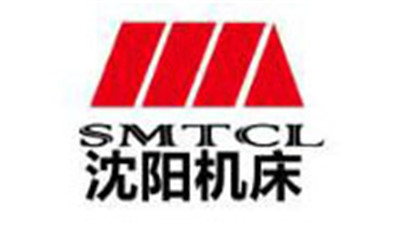Exploring the Advantages of Sq Inductive Coil Sq in Modern Electrical Applications
Table of Contents
- Understanding Sq Inductive Coil Sq and Its Functionality
- Key Benefits of Using Sq Inductive Coils in Modern Circuits
- Applications of Sq Inductive Coils in Renewable Energy Systems
- Comparative Analysis: Sq Inductive Coils vs. Traditional Inductors
- Installation Tips for Maximizing Sq Inductive Coil Performance
- Future Trends in the Development of Sq Inductive Coils
- Exploring the Benefits and Applications of Flat Wire SQ Inductive Coils in Modern Electronics
- FAQS
- Conclusion
- Related Posts
As electrical systems these days keep getting more advanced, it’s clear how important it is to have components that are both efficient and reliable. The Sq Inductive CoilSq? It’s become a pretty key player in this scene, bringing some pretty big perks like better performance, less energy waste, and overall greater dependability. If you look at reports from groups like the International Energy Agency, they’re saying the global market for inductive parts is set to really take off — mainly because everyone’s after energy-efficient gadgets and smarter tech. At Dezhou Xinping Electronics Co., Ltd., we’ve been around since 2001 — a high-tech outfit focused on precision electronic transformers, always pushing the envelope. By tapping into the unique qualities of the Sq Inductive CoilSq, we’re not just meeting industry standards — we’re actually surpassing what traditional solutions could do. That puts us in a pretty solid spot to help shape what’s coming next in electrical applications.

Understanding Sq Inductive Coil Sq and Its Functionality
The Sq inductive coil is honestly a pretty essential part of modern electrical tech these days. It’s impressive how it boosts functionality and efficiency across so many different industries. Basically, these coils work on electromagnetic induction, which means they can transfer energy without any direct contact—making them perfect for stuff like wireless chargers and inductive heating. That seamless operation is a huge plus because reliability really matters in those kinds of applications.
Oh, and get this—according to a recent report from MarketsandMarkets, the global market for inductive components is expected to jump from about $8.3 billion in 2021 all the way up to $13.5 billion by 2026. A big driver of this growth is all the new innovations happening in coil tech. The Sq inductive coil is a good example of this trend—it offers better performance, like higher power density and less energy loss. Plus, it’s super versatile, making it useful in everything from car electronics to everyday gadgets, which just shows how important it’s becoming in electrical engineering.
On top of that, recent advances in digital signal processing and new materials science are letting the Sq coil get even smaller and more integrated. Using advanced magnetic materials has helped reduce its size while keeping it efficient—so it fits nicely into compact designs now. All these developments point to a really bright future for the Sq coil, sealing its spot as a key player in the future of electrical technology.
Exploring the Advantages of Sq Inductive Coil Sq in Modern Electrical Applications
| Application | Advantage | Functionality | Material Used |
|---|---|---|---|
| Power Supply Systems | High Efficiency | Convert electrical energy to magnetic energy | Copper Wire |
| Inductive Charging | Cordless Convenience | Transfers energy wirelessly | Aluminum |
| Electric Motors | Minimal Losses | Provides magnetic field for rotation | Silicon Steel |
| Transformers | Voltage Regulation | Transfers energy between circuits | Magnetic Core Materials |
| Wireless Communication | Improved Signal Quality | Supports signal transmission | Copper or Gold Plating |
Key Benefits of Using Sq Inductive Coils in Modern Circuits
When it comes to modern electrical stuff, Sq Inductive Coils are really starting to stand out because they bring some pretty cool advantages. One of the biggest perks? Their efficiency in transferring energy. According to the 2023 Global Electronics Report, these coils can boost power transmission efficiency by up to 30% compared to older, more traditional methods. That’s a pretty big deal because it means lower energy bills and less impact on the environment. No wonder developers who care about sustainability are keen on using them!
On top of that, these coils are super compact and versatile, which is a total win if you're working in tight spaces. Industries like automotive and consumer electronics are jumping on board more and more. In fact, a study from the IEEE shows that the use of inductive coils in car applications has gone up by about 40% over the last five years. That’s a clear sign that folks are recognizing how many benefits these little coils can bring.
A quick tip: Before you decide to add Sq Inductive Coils to your project, make sure to really think about your power needs and how the load will behave. And don’t forget – how you position and design the coil can make a huge difference in how well it performs and how efficient it is. So, pay attention to those details!
Applications of Sq Inductive Coils in Renewable Energy Systems
As renewable energy systems become more popular, it's clear how important good energy storage and conversion tech really is. You know, inductive coils—especially those square-shaped ones—have been getting a lot of attention lately. Why? Because they help transfer energy more efficiently and cut down on losses. They're pretty awesome in things like wind turbines and solar panels because they make turning mechanical energy into electricity a lot smoother and more reliable. When you fine-tune how these coils couple with other components, they keep the power output steady, which is a big deal because renewable sources can sometimes be a bit unpredictable.
And that's not all—these coils are key players in smarter energy management systems that juggle different renewable sources. Take smart grids, for example; these coils help distribute and store energy seamlessly, making it easier to keep tabs on energy flow in real-time and ensure the grid stays reliable. Plus, their compact size and high performance mean they fit nicely into both big, multi-megawatt setups and small residential systems. It’s pretty cool how these little coils support the wider shift toward cleaner, more sustainable energy. All in all, using square inductive coils in these systems is a big step forward in creating more efficient, flexible energy infrastructures that really work for us.
Advantages of Sq Inductive Coil in Renewable Energy Systems
This bar chart highlights the advantages of Sq inductive coils used in renewable energy systems, showcasing their strong ratings in areas such as efficiency, stability, cost-effectiveness, integration, and scalability.
Comparative Analysis: Sq Inductive Coils vs. Traditional Inductors
You know, the arrival of square (Sq) inductive coils really marks a pretty big step forward in the world of electrical components. They're showing some clear advantages over the traditional round inductors. I was reading this recent industry report from Research and Markets—in fact, it says the global market for inductors is expected to jump from around $3.89 billion in 2023 to about $5.12 billion by 2028. That just goes to show how the demand for more efficient, better-performing parts is really picking up. What’s cool about these Sq coils is their unique square shape, which helps improve stuff like heat dissipation and reduces electromagnetic interference—making them perfect for modern electronics, automotive tech, and even renewable energy setups.
When you compare them directly to regular cylindrical inductors, the difference is pretty noticeable—especially at high frequencies. According to a study published by IEEE, these square coils can cut down losses by up to 20%. And because of their compact design, they allow for tighter circuit layouts—something that's super important when everyone's trying to make smaller, smarter devices these days. Being able to handle higher currents in a smaller space really helps engineers optimize their designs, meet tough performance standards, and—bonus—they help make the devices last longer too.
All in all, it’s definitely exciting to see how these innovations are shaping the future of electronic components!
Installation Tips for Maximizing Sq Inductive Coil Performance
When you're setting up Sq inductive coils, getting the placement and configuration just right is super important if you wanna get the best performance. First off, make sure the coil isn’t near any sources of electromagnetic interference—that means keeping it away from thick wiring or electronic gadgets that might mess with it. Placing it in a spot with less electronic clutter really helps. Also, lining up the coil with whatever load you're working with can make a big difference—it helps improve the power transfer and makes the whole system more efficient.

Another thing to keep in mind during installation is to maintain the right distance between the coil and the load. This spacing helps prevent signal stuff-ups and makes sure the inductance is matching what you need. Don’t forget about mounting—make sure the coil is secured tightly so it doesn’t shift around, because that can cause performance issues. And, if needed, throw in some shielding to protect the coil from outside influences—that way, everything runs smoothly and consistently. Basically, a little attention to these details can make a huge difference in how well your inductive setup works in today’s electrical projects.
Future Trends in the Development of Sq Inductive Coils
Looking ahead, the future of SQ inductive coils seems pretty exciting, especially as there's a growing need for smaller, more efficient electrical parts. As electronic devices keep getting tinier, these coils really stand out because they can still deliver top-notch performance even in a much smaller size. That means more space inside gadgets and better power management overall—perfect for consumer electronics, cars, or even renewable energy setups.
Plus, it’s no secret that new materials and smarter manufacturing methods are going to be game-changers here. Techniques like 3D printing and using better magnetic materials could really push the boundaries—leading to coils that manage heat better and pack higher inductance without getting bigger. And with the buzz around IoT and smart tech, someday these coils might include sensors or self-check features, making our electronic systems more intelligent and capable of adapting in real time. It’s a pretty exciting path forward!

Exploring the Benefits and Applications of Flat Wire SQ Inductive Coils in Modern Electronics
The exploration of flat wire SQ inductive coils has unveiled numerous benefits that significantly enhance their applicability in modern electronics. One of the standout features of these coils is their small volume coupled with a large current capacity, boasting a unit current density that is over 1.3 times greater than that of traditional round copper wire. This advantage facilitates compact designs in applications where space is a premium, allowing for the development of more efficient and powerful electronic devices.
In addition to size and efficiency, flat wire SQ inductive coils are designed with low DC resistance and minimal distributed capacitance, which contribute to superior heat dissipation. The closed magnetic circuit minimizes magnetic leakage, offering an ideal Electromagnetic Interference (EMI) effect that ensures consistent performance. With high insulation strength, these coils not only enhance the durability of the power supply but also promote stability in electronic operations, thereby extending the lifespan of devices. The use of fully automatic machines for winding ensures impeccable wire arrangement, maximizes production efficiency, and simplifies the customer experience with easy plug-in operations, ultimately leading to high-quality and efficient products in the market.
FAQS
: Sq inductive coils are components that enhance energy transfer and minimize losses, making them crucial for efficient energy storage and conversion, particularly in systems such as wind turbines and solar panels.
By optimizing inductive coupling, Sq inductive coils ensure stable and reliable power output when converting mechanical energy into electrical energy, addressing challenges faced by renewable energy sources.
Sq inductive coils are commonly used in wind turbines, solar panels, and smart grid applications, facilitating seamless energy distribution and storage.
Sq inductive coils assist in real-time tracking of energy flow and enhance grid reliability, which are crucial for integrating various renewable energy sources.
The trend towards miniaturization in electronic devices allows Sq inductive coils to maintain high performance in smaller sizes, optimizing space and improving overall power management efficiency.
Emerging techniques like additive manufacturing and advanced magnetic materials will lead to better thermal management, higher inductance values, and improvements in coil design.
Yes, future Sq inductive coils may include smart technology features, sensors, and self-diagnostic capabilities, enabling smarter and more adaptive electrical systems.
Advancements in Sq inductive coils are expected to benefit the consumer electronics, automotive, and renewable energy sectors by offering more efficient power management solutions.
Their ability to enhance energy transfer and minimize losses contributes to more stable and reliable energy output, which is essential for effective energy management in renewable systems.
The integration of IoT features will allow Sq inductive coils to adapt to real-time conditions, improving device performance and responsiveness in various applications.
Conclusion
So, I read this article called "Exploring the Advantages of Sq Inductive Coil Sq in Modern Electrical Applications," and honestly, it was pretty interesting. It really dives into what makes these Sq Inductive Coils so cool and why they matter in today's circuits. The author points out some pretty neat perks, like how they boost efficiency and make electrical systems work more smoothly. I also liked how they showed how these coils are being used in renewable energy setups — totally emphasizing their role in pushing sustainable tech forward. Plus, there’s a comparison with old-school inductors that makes it clear these new coils are way better.
They didn't stop there, either. The article gives some practical tips on installing these coils to get the most out of them, which is super helpful if you’re thinking of actually using them. Looking ahead, it touches on where these coils might be headed in the future, especially as Dezhou Xinping Electronics Co., Ltd. continues to focus on precision and innovation — they’ve been doing their thing since 2001, after all. Overall, it’s a pretty insightful read if you’re into modern electronics and new tech trends.
Related Posts
-

Unlocking the Power of Sq Inductive Coil Sq: Understanding Its Role in Modern Technology
-

The Future of Enhancing Device Performance with Chip Common Mode Chokes Inductor
-

5 Amazing Benefits of Step Up Transformer 110v To 220v You Need to Know
-

Understanding Problems Associated with Earthing Transformers in Power Systems
-

Revolutionizing Power Efficiency: The Future of Ferrite Transformers in Renewable Energy Systems
-

Unveiling the Future of 11kv Transformers at the 138th Canton Fair 2025 in China
Blog Tags:


















